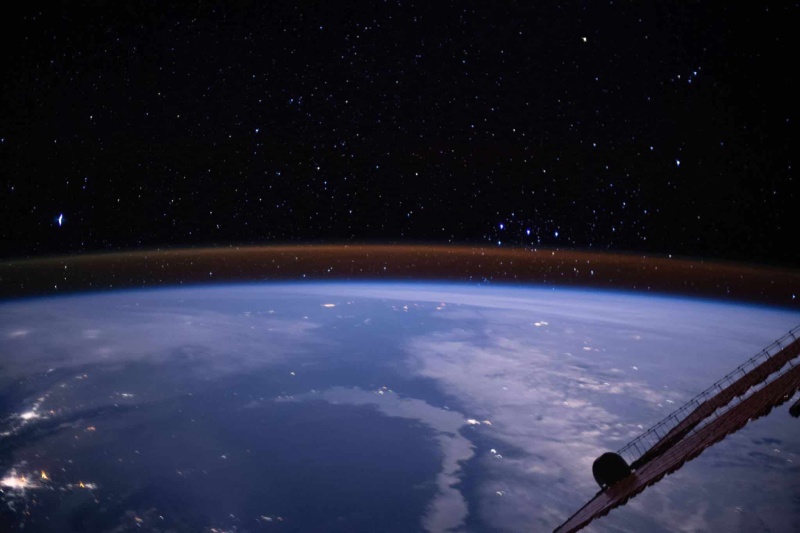A magnificent new image taken from the International Space Station shows the Earth’s horizon illuminated by a golden glow.
The new image depicts the atmospheric glow, or airglow, that is produced when sunlight interacts with Earth’s atmosphere’s atoms and molecules. NASA released the new image on January 21. It depicts an auburn-colored band and a dazzling golden glow arching above Earth against the black contrast of a starry sky.
According to a NASA image description, the picture was shot at a height of 258 miles (415 kilometers) while the orbiting lab sailed over the Pacific Ocean northeast of Papua New Guinea.
The interaction between UV radiation from sunlight and molecules of nitrogen, oxygen, sodium, and ozone in Earth’s upper atmosphere causes airglow, which is the result of the molecules colliding and emitting light as a result. The greatest time to observe this kind of light show is at night. In order to get a clear image of Earth and the starry sky, the most current picture was taken at a high exposure.
The International Space Station (ISS), which orbits Earth roughly every 90 minutes at a speed of 5 miles per second (8 kilometers per second), experiences 16 sunrises and sunsets in a 24-hour period. With every revolution, the space station sees roughly 45 minutes of daylight and 45 minutes of darkness.
Above the deep blue Pacific Ocean, the image depicts white, wispy cloud tops, in addition to the vibrant golden auburn glow. A few components of the space station itself were also briefly visible; these were the Russian space agency Roscosmos’s Prichal docking module and the multipurpose laboratory module Nauka.
Seen on the left of the picture, Prichal is joined to Nauka and offers five docking ports to handle several Russian spacecraft in addition to fuel transfer capabilities. Arriving at the space station in July 2021, the Nauka module—which serves as the main laboratory for the Russian section of the International Space Station (ISS)—was quickly followed by Prichal in November 2021.





